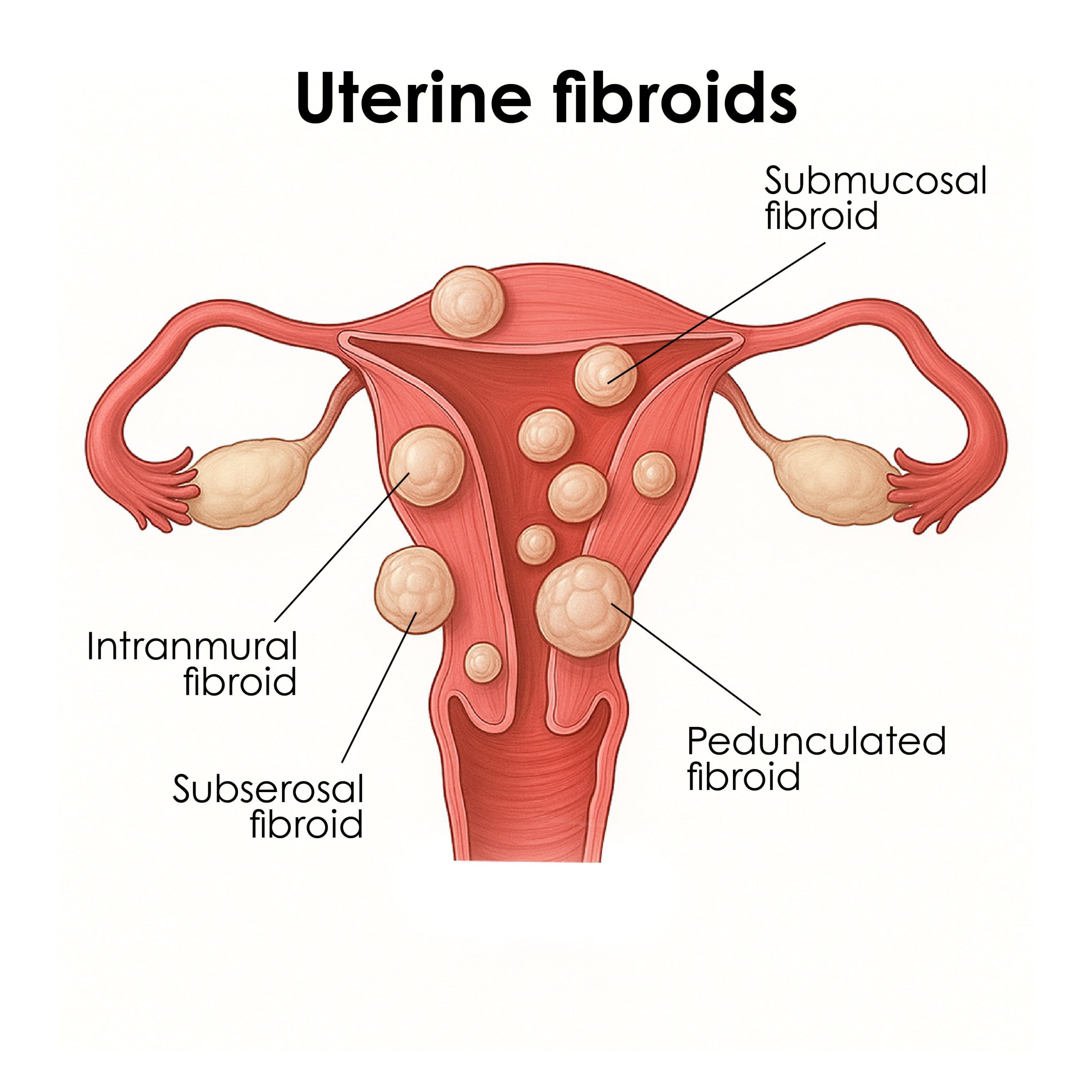Non-Surgical Treatments
Hormonal Therapies
Birth control pills, progestin-releasing IUDs, and GnRH agonists to regulate hormones and reduce fibroid size.
Medications
NSAIDs for pain relief and iron supplements for anemia caused by heavy bleeding.
Minimally Invasive Procedures
Uterine Artery Embolization (UAE)
Reduces fibroid size by cutting off their blood supply.
Focused Ultrasound Surgery (FUS)
Uses high-intensity ultrasound waves to shrink fibroids.
Surgical Options
Myomectomy
Removes fibroids while preserving the uterus, ideal for women seeking to conceive.
Laparoscopic Myomectomy: Minimally invasive with quicker recovery.
Hysteroscopic Myomectomy: Removes submucosal fibroids via the vagina.
Hysterectomy
Complete removal of the uterus, recommended for severe cases when childbearing is not a goal.







